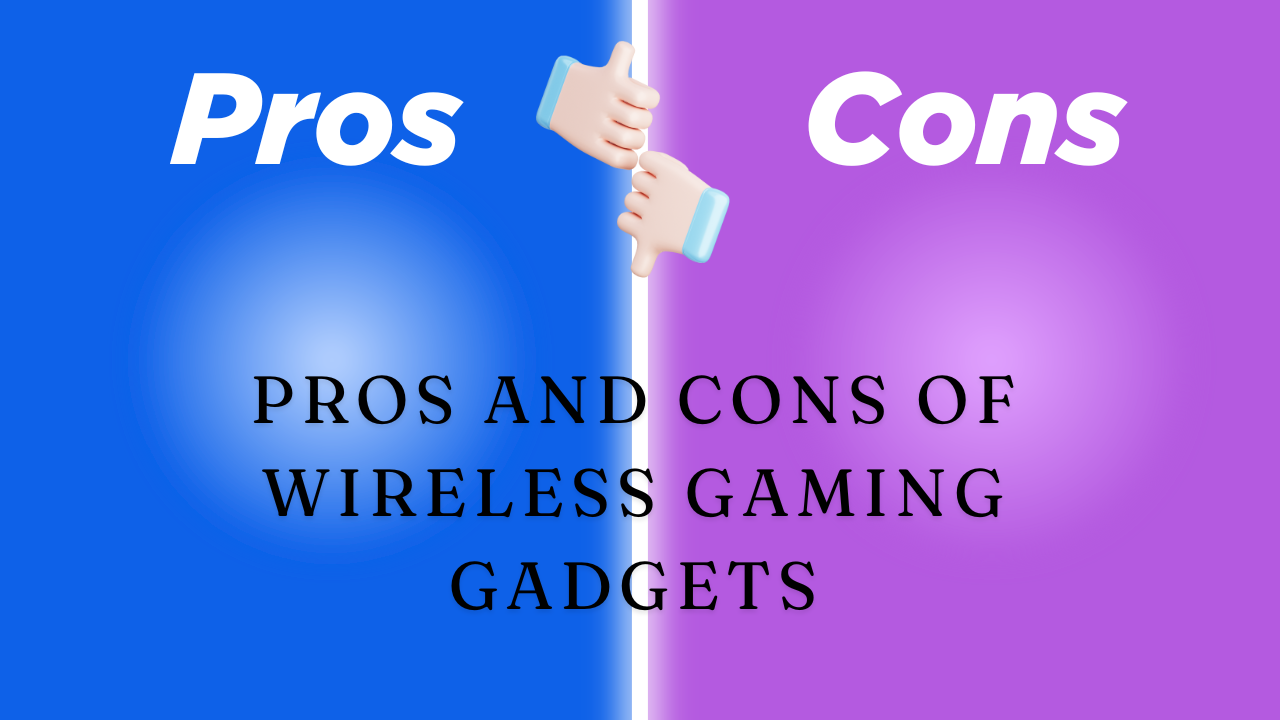Wireless technology has revolutionized many aspects of our lives, including gaming. The convenience of wireless gadgets, such as controllers, headsets, and mice, offers a tangle-free and more flexible gaming experience. However, like any technology, wireless gaming gadgets come with their own set of advantages and disadvantages. In this article, we will explore the pros and cons of wireless gaming gadgets to help you make an informed decision on whether they are the right choice for your gaming setup.
Introduction: The Shift Towards Wireless Gaming
The gaming industry has seen a significant shift towards wireless technology in recent years. This change has been driven by advances in Bluetooth and Wi-Fi technologies, which have improved the reliability and performance of wireless devices. Wireless gaming gadgets are now capable of delivering a high-quality experience that rivals their wired counterparts, but they are not without their challenges.
The Pros of Wireless Gaming Gadgets
1. Freedom of Movement and Convenience
One of the most significant advantages of wireless gaming gadgets is the freedom of movement they offer. Without the restriction of cables, players can move freely around their gaming space. This is particularly beneficial for devices like wireless headsets and controllers, allowing for a more immersive and comfortable gaming experience.
2. Reduced Clutter
Wireless gadgets help reduce the clutter of cables around your gaming area, leading to a cleaner and more organized setup. This not only improves the aesthetic appeal of your gaming space but also eliminates the frustration of tangled wires and the need for extensive cable management.
3. Easy Setup and Portability
Setting up wireless devices is typically easier and faster compared to wired counterparts. Most wireless gadgets use plug-and-play functionality, allowing for quick and straightforward installation. Additionally, wireless devices are more portable, making it easier to switch between gaming setups or take them with you on the go.
4. Advanced Features and Flexibility
Many wireless gaming gadgets come equipped with advanced features that enhance the gaming experience. For example, wireless gaming mice often include customizable buttons and adjustable DPI settings, while wireless headsets may offer surround sound and noise-cancellation features. The lack of physical constraints also allows for more ergonomic designs, providing greater comfort during extended gaming sessions.
5. Compatibility with Multiple Devices
Wireless gaming gadgets are often compatible with multiple platforms, including PCs, consoles, and even mobile devices. This versatility allows you to use a single device across different systems, making it a cost-effective choice for gamers who play on various platforms.
The Cons of Wireless Gaming Gadgets
1. Potential for Latency and Interference
One of the primary concerns with wireless gaming gadgets is the potential for latency and interference. Wireless signals can sometimes experience delays or disruptions, which can be detrimental in fast-paced games where every millisecond counts. Factors such as physical obstructions, other wireless devices, and even the type of building materials can affect signal strength and stability.
2. Battery Life and Maintenance
Wireless gadgets require batteries to operate, which means they need to be recharged or replaced regularly. This can be inconvenient, especially if your device runs out of power in the middle of a gaming session. Additionally, battery performance can degrade over time, leading to shorter usage periods and the need for more frequent charging.
3. Potential for Higher Costs
Wireless gaming gadgets often come at a higher price compared to their wired counterparts due to the additional technology required for wireless functionality. The cost of replacing batteries or purchasing additional accessories, such as charging docks or wireless adapters, can also add up over time.
4. Security and Privacy Concerns
Wireless devices can be more susceptible to security risks such as hacking or unauthorized access. While most modern wireless gadgets use encryption to protect data, it is still possible for signals to be intercepted. Ensuring your devices are updated with the latest firmware and security features is crucial to mitigating these risks.
5. Limited Range and Signal Dropouts
Wireless gaming gadgets have a limited range, and moving too far from the signal source can result in a loss of connection or degraded performance. This can be particularly problematic in larger gaming spaces or when there are multiple walls or obstacles between the device and the receiver. Signal dropouts can interrupt gameplay and lead to a frustrating experience.
Comparing Wireless and Wired Gaming Gadgets
When deciding between wireless and wired gaming gadgets, it is essential to consider your specific needs and preferences. Here’s a quick comparison of the two options:
| Feature | Wireless Gadgets | Wired Gadgets |
|---|---|---|
| Mobility | High – Freedom of movement | Low – Restricted by cables |
| Setup and Portability | Easy setup and highly portable | Requires more setup, less portable |
| Performance | Potential for latency and interference | Consistent performance, no latency |
| Battery Maintenance | Requires regular charging | No battery maintenance needed |
| Cost | Generally higher due to added tech | Typically lower cost |
| Security | Potential for signal interception | More secure due to physical connection |
| Range | Limited range, subject to dropouts | Unlimited within cable length |
| Cable Management | No cables, less clutter | Requires cable management |
Choosing the Right Wireless Gaming Gadgets
When selecting wireless gaming gadgets, consider the following factors to ensure you get the best device for your needs:
1. Performance and Latency
Check the latency specifications of the device. Lower latency means faster response times, which is crucial for competitive gaming. Look for devices with 2.4 GHz or Bluetooth 5.0 connectivity for improved performance.
2. Battery Life
Consider the battery life of the gadget. Devices with longer battery life reduce the frequency of charging, providing uninterrupted gaming sessions. Look for gadgets that offer at least 8-12 hours of battery life per charge.
3. Comfort and Ergonomics
Ensure the device is comfortable to use for extended periods. Ergonomic designs can prevent fatigue and discomfort, especially for gaming mice and headsets that are used for long durations.
4. Compatibility and Features
Verify the compatibility of the gadget with your gaming platform. Ensure it supports the features you need, such as customizable buttons, surround sound, or low-latency modes.
5. Brand and Reviews
Choose gadgets from reputable brands known for quality and reliability. Read reviews and user feedback to gauge the performance and durability of the device.
Weighing the Pros and Cons
Wireless gaming gadgets offer a range of benefits, including mobility, convenience, and advanced features. However, they also come with challenges such as latency, battery maintenance, and potentially higher costs. Understanding these pros and cons will help you make an informed decision and choose the best gaming gadgets for your needs.



